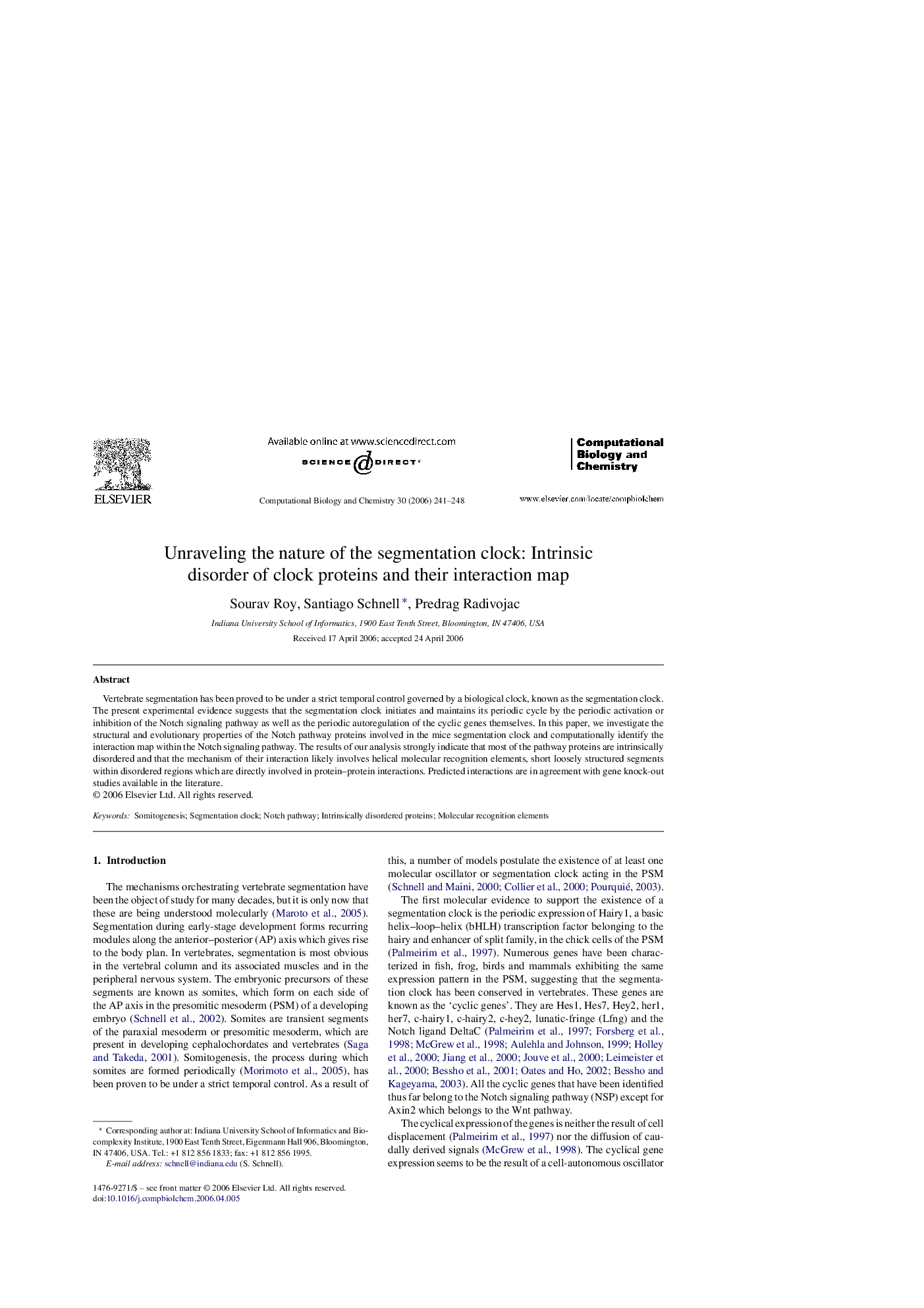| Article ID | Journal | Published Year | Pages | File Type |
|---|---|---|---|---|
| 15560 | Computational Biology and Chemistry | 2006 | 8 Pages |
Vertebrate segmentation has been proved to be under a strict temporal control governed by a biological clock, known as the segmentation clock. The present experimental evidence suggests that the segmentation clock initiates and maintains its periodic cycle by the periodic activation or inhibition of the Notch signaling pathway as well as the periodic autoregulation of the cyclic genes themselves. In this paper, we investigate the structural and evolutionary properties of the Notch pathway proteins involved in the mice segmentation clock and computationally identify the interaction map within the Notch signaling pathway. The results of our analysis strongly indicate that most of the pathway proteins are intrinsically disordered and that the mechanism of their interaction likely involves helical molecular recognition elements, short loosely structured segments within disordered regions which are directly involved in protein–protein interactions. Predicted interactions are in agreement with gene knock-out studies available in the literature.
